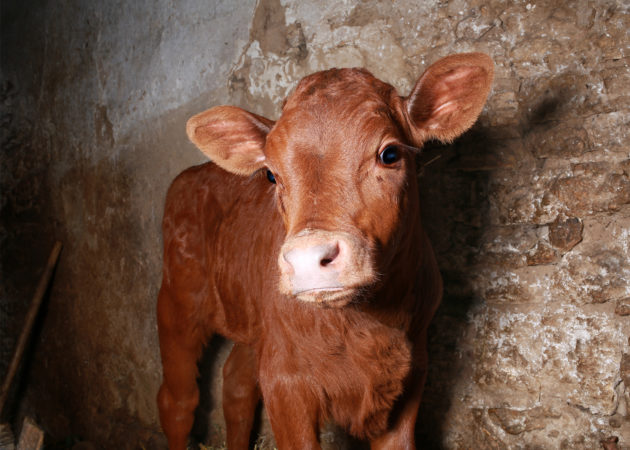
Humane societies release new code of practice for veal cattle
Food in Canada
Food In Canada Food Trends Regulation Meat &Poultry code of practiceThe Canadian Federation of Humane Societies says the new animal welfare commitments have buy-in from industry and will improve the quality of life for veal cattle in Canada
 little bull-calf on a farm
little bull-calf on a farm Ottawa – The Canadian Federation of Humane Societies (CFHS) has announced a new code of practice when it comes to handling veal cattle.
In a statement, the CFHS says the new “animal welfare commitments have buy-in from industry and will be phased in as part of the new National Farm Animal Care Council’s Code of Practice for the Care and Handling of Veal Cattle.”
Barbara Cartwright, the CEO of CFHS, says in the statement that the new code will improve the quality of life for “calves raised for veal.”
For one thing, she says, the code of practice calls for a “phase-out of veal calf crates,” which will “increase social contact and lessen distress for these herd animals, and the new rules on feeding will help to address anemia and malnourishment in the industry.”
The code of practice includes other requirements. As listed in the statement, they are:
Housing requirements:
•For new or renovated structures: As of July 1, 2018, calves in newly built or renovated housing must be switched to group housing at as young an age as possible and no later than 8 weeks of age. Tethering is prohibited.
•For existing structures: As of December 31, 2020, calves in existing structures must be switched to group housing at as young an age as possible and no later than 8 weeks of age. Tethering is prohibited.
• Individual housing used in the first 8 weeks of life must allow calves to stand up, lie down in multiple positions, turn completely without assistance, groom, stand fully upright without touching the top of the enclosure and have physical or visual contact with other calves.
Requirements for pain control and painful procedures:
• The tails of the calves must no longer be docked unless deemed medically necessary by a vet, and all tail docking must be performed by a vet.
•Pain control must be used, during and after tail docking, castration, disbudding and dehorning procedures.
• A requirement that castration, disbudding and dehorning be performed at as early an age as possible to minimize pain and complications.
Malnutrition and hunger requirements:
• Calves must have access to a quality and quantity of food to fulfill their nutritional needs, maintain health and vigor and prevent hunger.
• Producers in milk-fed veal systems must create a vet-approved written protocol for anemia prevention that includes monitoring of hemoglobin levels.
• Calves who are below a specific blood hemoglobin level must receive iron supplements.
• Calves must be fed milk or milk replacer at least twice a day except during weaning.
• Feed must be provided in a way that prevents competition for feed and potential injury due to competition for feed.
• There are now requirements about when and how weaning is carried out. Weaning cannot be started until calves are at least 4 weeks of age and cannot be completed until they are at least 6 weeks of age. Weaning must be carried out gradually, and calves must be monitored and promptly assisted if they are not coping well with the transition.
Print this page